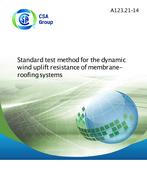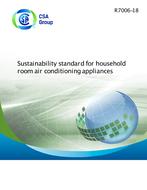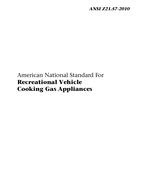Click here to purchase
Preface:
This twenty-fourth edition of the Canadian Electrical Code, Part I, was approved by the Committee on the Canadian Electrical Code, Part I, and by the Regulatory Authority Committee at their June 2017 meetings in Halifax, Nova Scotia. This twenty-fourth edition supersedes the previous editions, published in 2015, 2012, 2009, 2006, 2002, 1998, 1994, 1990, 1986, 1982, 1978, 1975, 1972, 1969, 1966, 1962, 1958, 1953, 1947, 1939, 1935, 1930, and 1927.
This edition features important revisions to many Sections. Section 26 now mandates the use of tamper-resistant receptacles in additional areas where children may be present. Section 62 now requires ground fault circuit interrupter protection for heating devices and controls in proximity to tubs, sinks, and shower stalls.
Section 10 has been updated, reorganized, and significantly reduced in length. Requirements for power over ethernet systems have been added to Section 16, and requirements for marinas, wharves, and similar facilities have been substantially updated and reorganized in Section 78.
To address the increasing use of electric vehicles, Section 8 now formally recognizes energy management systems as a method of reducing the load on building services. Because lighting control devices associated with energy management or home automation require power to operate, Section 4 now requires that an identified conductor be provided for all devices controlling permanently installed luminaires.
Other revisions in this edition include the following:
- in Section 26, Rules 26-400 to 26-726 have been reorganized and renumbered in order to group related concepts together and provide a more logical flow for the requirements;
- in many Sections, the redundant use of the term “approved” has been eliminated;
- clarification has been provided on arc-fault circuit interrupter protection for bathrooms, washrooms, existing circuits, and circuits supplying carbon monoxide or smoke alarms;
- requirements for dining area and refrigerator circuits have been clarified;
- the terms “jacketed”, “insulated”, and “covered” as applied to conductors have been clarified through a new definition of the term “jacket” and a revised definition of the term “conductor” in Section 0. As a result, the term “conductor” has been replaced with “insulated conductor” in many Sections of the Code;
- Section 82 has been deleted as it covered a technology that is no longer in use; and
- a new Appendix M containing French translations of markings has been added.
Many of the changes in this edition were developed by cross-functional working groups. Their work is gratefully acknowledged.
General arrangement:
The Code is divided into numbered Sections, each covering some main division of the work. Sections 0 to 16 and 26 are considered general sections, and the other sections supplement or amend the general sections. The Sections are divided into numbered Rules, with captions for easy reference, as follows:
a) Numbering system — With the exception of Section 38, even numbers have been used throughout to identify Sections and Rules. Rule numbers consist of the Section number separated by a hyphen from the 3- or 4-digit figure. The intention in general is that odd numbers may be used for new Rules required by interim revisions. Due to the introduction of some new Rules and the deletion of some existing Rules during the revision of each edition, the Rule numbers for any particular requirement are not always the same in successive editions.
b) Subdivision of Rules — Rules are subdivided in the manner illustrated by Rules 8-204 and 8-206, and the subdivisions are identified as follows:
00-000 Rule
(1) Subrule
(a) Item
(i) Item
(A) Item
c) Reference to other Rules, etc. — Where reference is made to two or more Rules (e.g., Rules 10-200 to 10-206), the first and last Rules mentioned are included in the reference. Where reference is made to a Subrule or Item in the same Rule, only the Subrule number and/or Item letter and the word “Subrule” or “Item” need be mentioned. If the reference is to another Rule or Section, then the Rule number and the word “Rule” shall be stated (e.g., “Rule 10-200(3)” and not “Subrule (3) of Rule 10-200”).
The principal changes that have been made between the 2015 edition of the Canadian Electrical Code, Part I, and this new edition, published in 2018, are marked in the text of the Code by the symbol delta in the margin. Users of the Code are advised that the change markers in the text are not intended to be all-inclusive and are provided as a convenience only; such markers cannot constitute a comprehensive guide to the reorganization or revision of the Code. Global revisions that improve the overall consistency and precision of Code language without affecting the interpretation of any specific Rule are not identified. Care must therefore be taken not to rely on the change markers to determine the current requirements of the Code. As always, users of the Code must consider the entire Code and any local amendments or interpretations.
This Standard has been developed in compliance with Standards Council of Canada requirements for National Standards of Canada. It has been published as a National Standard of Canada by CSA Group.
Scope:
This Code applies to all electrical work and electrical equipment operating or intended to operate at all voltages in electrical installations for buildings, structures, and premises, including factory-built relocatable and non-relocatable structures, and self-propelled marine vessels stationary for periods exceeding five months and connected to a shore supply of electricity continuously or from time to time, with the following exceptions:
a) installations or equipment employed by an electric, communication, or community antenna distribution system utility in the exercise of its function as a utility, as recognized by the regulatory authority having jurisdiction, and located outdoors or in buildings or sections of buildings used for that purpose;
b) equipment and facilities that are used in the operation of an electric railway and are supplied exclusively from circuits that supply the motive power;
c) installations or equipment used for railway signalling and railway communication purposes, and located outdoors or in buildings or sections of buildings used exclusively for such installations;
d) aircraft; and
e) electrical systems in ships that are regulated under Transport Canada.
For mines and quarry applications, see also CSA M421.
This Code and any standards referenced in it do not make or imply any assurance or guarantee by the authority adopting this Code with respect to life expectancy, durability, or operating performance of equipment and materials so referenced.
Product Details
- Edition:
- 24th
- Published:
- 01/01/2018
- ISBN(s):
- 9781488311413
- Number of Pages:
- 937
- File Size:
- 1 file , 8.1 MB
- Product Code(s):
- 2426056


